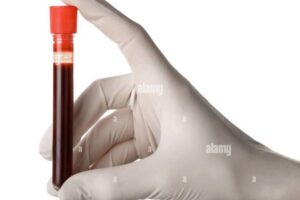Table of Contents
Am I a Psychiatric Patient, an Anorexic Patient, or a Legitmate Patient?
My life was starting to have more twists and turns to it than a high-tech roller coaster ride. Originally, I went into the hospital because I passed out in an elevator. Then the doctors in the ER did some tests and examined me and said that I had some serious medical issues. I was considered a legitimate medical patient, not a psychiatric patient. My parents insisted that there was nothing wrong with me, I was just a ten-year-old anorexic. Suddenly my position as a legitimate medical patient was under scrutiny.
After the hospital ran a whole battery of tests all they could come up with was that I had barely any bowel sounds, couldn’t hold down any food or drinks, and had sky-high inflammation labs. They couldn’t figure out if I was a legitimate patient, an eating disorder patient, or a psychiatric patient

Becoming Both a Psychiatric Patient and an Anorexic Patient
“She needs eating disorder treatment,” my parents both kept insisting. The doctors didn’t seem totally convinced that this was the end of the issue but deferred to my parents who knew me best. Now I was an eating-disordered patient.
My parents couldn’t find an eating disorder facility that would take a child my age, but a program in New York City said that if I were admitted to the children’s psychiatric unit for kids aged five to eleven, I could attend meals, snacks, and therapy groups with the eating disorder unit girls. I was both a psychiatric patient and an anorexic patient.

The Dreaded Mealtimes on the Eating Disorders Unit
The rules at meal times were that we weren’t allowed to enter with clothes with any pockets or hoods. We had to be searched before going in and before going out. The dietitian set up our menu with us every three days according to our specific diet
We had one hour to eat our entire tray. If we didn’t finish 100% of our tray we had to stay and drink a Boost Plus or an Ensure Plus. They gave us 20 minutes to drink the supplement. If we didn’t we lost privileges.
Every time I tried to drink the Boost or Ensure Plus at the meals with the eating-disordered girls, it would make me feel like I needed to puke, but their staff wouldn’t let me leave the room, so I’d throw up all over myself.

Being Accused of Purging Because I Was a Legitmate Patient Not an Anorexic Patient, or a Psychiatric Patient
“You can’t purge in the dining room like that!” the counselors and nurses would tell me. “Do you know how triggering that is for the other girls?”
At first, I didn’t even know what purging was, but in therapy groups, I learned it was forcing yourself to vomit to get rid of food you just ate so that you didn’t gain weight, or to lose weight. Then I got really confused about why the counselors and nurses said I was “purging” when I threw up, because I obviously wasn’t doing it on purpose, and I would do anything to gain weight, my body just wouldn’t cooperate.
The anxiety the meals and snacks on the eating disorder unit caused was obvious to everyone.
Dr. Hizami, my psychiatrist on the regular psychiatric unit decided I must have an anxiety disorder and put me on a medication called Klonopin, a benzodiazepine (powerful anti-anxiety/sedative medication.

Klonopin Turned Me Into a Psychiatric Patient
I completely lost it. Now I was officially a psychiatric patient. It was like someone flipped the crazy switch on me and I turned into a ball of self-destructive energy, smashing my head against walls, biting my arms till they bled, and pulling out fistfuls of my own hair.
They were constantly restraining me to the bed and sedating me. I had no conscious control over my behavior, it was all chemically created by the reaction to the Klonopin. When I tried to sit still my muscles quivered and my whole body shook, and it was torture until I allowed my body to move.
Pulling Out My Feeding Tube Because I Was An Out-of-Control Psychiatrice Patient; Not Anorexic
At one point, I pulled out my feeding tube because I was throwing myself around the Quiet Room so forcefully. Once again it had nothing to do with my conscious control or my so-called ‘Anorexia Nervosa’ or anything. I was so completely out of it that I couldn’t even begin to tell you what was running through my misfiring brain then.
I tried to fight off three nurses and a doctor because I knew how bad it would hurt to get the tube put back in, but I was too weak and they strapped my wrists and ankles down to the bed and put that net-type device over my whole body to keep me tied to the bed and then I felt them force the NG tube back up my nose and down my throat into my stomach.
I felt intense pressure in my nose, My eyes started watering, it became extremely painful as the tube slid up through the top of my nose, Then it was slowly guided in as I felt like I was going to puke it back up. Gagging and crying, it felt like I had been kidnapped from the Quiet Room and was now being tortured to death.

When You are a Child and a Psychiatric Patient You are Powerless
After the tube was back in, the doctors and nurses filed out of the room, and one counselor remained in a chair in the doorway as I lay in the bed tied down by that net.
“Can you please let me out now?” I asked the counselor.
She just pretended she didn’t hear me and continued to do some charting on the computer she had wheeled in earlier. When you are a child and a psychiatric patient, you don’t have a voice. The hospital staff left me tied to the bed for over twenty minutes. Once they released me, I refused to speak with them.
Dr. Hizami came up with a behavioral plan for me a day later.
Getting Secluded in the Quiet Room
He put me on one-to-one observation status, but when they locked me in the Quiet Room, even my One-to-One wasn’t allowed in there with me. He or she would just stare at me through the scratched-up plexiglass window in the door.

A wire of pent-up wild energy unable to burn its way through me drove me to bounce around the little room, but the energy was still endless. It was still there no matter how many times I hurled myself against the less-than-padded walls of the children’s psychiatric unit’s so-called “Quiet Room”. It was still there how many times I ricocheted my head off of the mattress on the floor, the walls, the floor, any surface. The pain was just an afterthought because I was so amped up.
Dr. Hizami’s Behavior Plan
Dr. Hizami’s plan stated that the first incident where I was so self-destructive and lost control of myself, I would lose privileges to go off the unit with the other kids to the games room, or the playroom, or pet therapy or magic shows on the regular pediatric floor.
If there was a second incident, I would have to start sleeping in The Quiet Room.
If I had a third episode, I would lose all my clothes and have to wear pediatric hospital gowns for three days.
On the fourth episode, I would be restricted to the Quiet Room permanently except for occasional fifteen-minute breaks with staff, and if I got out of control in the Quiet Room, I would be restrained to the mattress on the floor in there. Then each successive time I lost control and staff felt like I was “being unsafe” and “needed to be restrained”, I would lose a toy, game, or puzzle for a week.

Losing All of My Privileges Because I was a “Bad Psychiatric Patient”
As my possessions began dwindling away to almost nothing, Dr. Hizami and the hospital came up with even more consequences to try to control my behavior. They started taking away my fifteen-minute breaks from the Quiet Room, my phone privileges, and my visit privileges.
I was just all alone in this little white room with nothing but a mattress on the floor and my one-to-one staring at me through the plexiglass window in the door. Any conception of time was gone. It was just me in the seclusion room with a mattress on the floor.

My parents called up every day to ask if they could visit me or talk to me on the phone for a few minutes.
“I hate to tell you this, but Becca is not displaying appropriate enough behavior to earn phone or visiting privileges right now,” the social worker kept telling them.
The way the hospital was reacting to my strange behavior didn’t seem appropriate to my parents. I was a ten-year-old child who had suddenly started behaving in ways they had never seen me behave.
Now I’m Ony a Psychiatric Patient
The only reason I had gone to the psychiatric part of the hospital was so that I could have a more appropriate age group to live with while attending the eating disorder program. Now all a sudden I was completely out of control. I wasn’t even allowed to go off the unit to the eating disorder meals and groups anymore.
I had gone from being an eating disorder patient to a psychiatric patient, even though I still couldn’t keep any food down and was on tube feedings.

My mom and dad weren’t taking it anymore. This wasn’t the Becca they knew they were seeing, this was some crazy gremlin left in her place instead. Hmm, maybe if you don’t feed a Becca for two years this is what happens?
As many issues as I’ve had with my parents over the years, there is one undeniable fact. They love me unconditionally. There was no way they were going to just sit back and watch me get locked up in a little white room for days on end like a prisoner in solitary confinement.
They knew that something had gone horribly wrong, but couldn’t point out exactly what that something was, but they were determined to figure it out.
Time to Do Some Research
My dad used his school’s library to look up more in-depth complications of eating disorders. He also gathered a list of diagnoses I’d been labeled with starting at age eight. My mom called up the medical records department of St. Mercy’s Hospital (the hospital I was at) and got a copy of all my records that my parents poured over together. They wrote down all the medications I’d ever been put on.

Then they used my dad’s school database to research my diagnoses, medications, and the therapies that the psych unit was using. They also conferred with some family friends who happened to be psychiatrists.
Right before I went nuts, and became a psychiatric patient, Dr. Hizami had started me on Klonopin for the anxiety caused by being accused of purging every time I unsuccessfully tried to eat with the eating disorder unit.
He had no idea that was the cause of my anxiety, so he just diagnosed me with “Generalized Anxiety Disorder” and medicated me.
What my parents read from multiple American Journal of Psychiatry articles was that benzodiazepines (the class of anti-anxiety medications that Klonopin, Ativan, Xanax, and Valium fall under), can cause severe psychomotor agitation and even a paradoxical reaction in prepubescent youths.

The Klonopin is What Turned Me Into a Psychiatric Patient
The chemical reactions in my brain from the Klonopin were so powerful that I couldn’t control my behavior. I needed medication adjustments. The unit staff could use behavioral intervention after behavioral intervention until they were completely out of breath and energy, but until they adjusted my medication, nothing was going to help.
My mom got on the phone with Dr. Hizami.
“We need to have a meeting,” she told him.
“Let me finish some reports, look through my planner, and I will call you back with a few dates I have available next week,” Dr. Hizami told her.
“No.” my mom said the single word, but it was raw and gritty.
“What do you mean “no”? asked Dr. Hizami, “I thought that you wanted to have a meeting to discuss Becca’s behavior?”
“No, we are not waiting until next week. You have tortured my ten-year-old daughter long enough. How about I give you two choices? Either we meet this afternoon, or first thing tomorrow morning.

Challenging Dr. Hizami’s Authority
Dr. Hizami stammered on the phone for several minutes before catching his bearings. No one had ever questioned his authority. He was the head psychiatrist of the entire child and adolescent psychiatry program run out of St. Mercy Medical Center. That included the child unit, the adolescent unit, the adolescent eating disorder unit, the adolescent drug and alcohol rehab, all the child and adolescent residential treatment programs based out of St. Mercy’s, and all the outpatient child and adolescent services.
“We can meet at 3 PM today,” he told my mom, once he recovered from his shock.
The Family Meeting With Dr. Hizami
“We think that Becca is having a paradoxical reaction to the Klonopin and other benzodiazepines she’s been given. We have never seen her behave like this ever before in our lives. This behavior first started a day after she started the Klonopin and intensified every time she was injected with Ativan.” My mom told Dr. Hizami point blank once we were settled in the family therapy room.

My dad slid across printed-out articles on benzodiazepines in certain children who hadn’t hit puberty yet, he had highlighted multiple passages in yellow highlighter.
I just sat there watching and fighting the urge to start losing it.
“Well I guess the Klonopin could have some effect on her behavior, but the way she has been acting is so out-of-control. There has to be some underlying pathology.” Dr. Hizami said.
“I have never once in my life seen her in the state she is in right now.” My dad snapped at him. “She didn’t even come in to be treated as a psychiatric patient. The only reason she’s here is so that she can go to the eating disorder groups which she is not even going to anymore, and she’s still not eating.”
“She has a generalized anxiety disorder, it’s triggering her to act out of a primal part of her brain,” insisted Dr. Hizami.
“So this behavior happened to appear out of nowhere, and it was a coincidence that it started as soon as she was put on the Klonopin?” my mom asked disgusted.
Giving Dr. Hizami an Ultimatum
The verbal battle went on another ten minutes before my dad gave Dr. Hizami an ultimatum.
“Either you wean Becca off the Klonopin, or we sue you for malpractice,” my dad said. “Keeping her on a medication, that we, her guardians don’t want her on is illegal and malpractice.”

“The behavior plan has to be adjusted as well,” my mom added in. “Right now it’s child abuse. You need to give her back her stuffed animals, toys, games, puzzles, clothes without strings or metal, and shoes without laces. She also needs to be allowed phone calls and visitors just like all the other kids.”
“You’re going to raise a self-entitled out-of-control monster,” Dr. Hizami told us. “But we’ll do it.”
My Psych Symptoms Were Resolving But I Maintained the Psychiatric Patient Label
I remained a psychiatric patient over the next few days as they slowly weaned me off the Klonopin, but I got all of my stuff back, even though they still made me sleep in the Quiet Room at night. The out-of-control feelings were slowing down, and I was starting to feel like I could sit still again and focus, and didn’t need to slam myself into walls or pull out fistfuls of my own hair
Just when my days finally started looking up, icy hot pains started spearing through my belly. My body began switching from being too sweaty to ice cold to extremely nauseous.
I started vomiting up my tube feeds and what looked and smelled like poop, but I was just a psychiatric patient so all the nurses on the unit told me it was only dark bile.

Being a Psychiatric Patient Meant my Pain and Vomiting Was Ignored
The severe pain continued for the next four days. During my last four days on the inpatient children’s psychiatric unit, the pain got worse and worse each day. I would lie in bed as pain jolted through my little belly and silent tears leaked out the corners of my eyes.
At points, the pain got so bad that I could barely breathe. Every day the pain got worse. Because I was just a psychiatric patient the staff called me “overly dramatic”. They said that I was looking for attention being a hypochondriac, or trying to manipulate. The list went on and on.
On my final day on the psych unit, Lizzy, one of my favorite nurses, noticed that my belly had grown really distended and hard. She also noticed that I was really pale, but my cheeks were flushed bright red and my skin was hot to the touch. I was camped out strategically surrounded by all of the teddy bears and stuffed animals. People had surprised me with them as get-well presents when I was a medical patient. But once you’re a psychiatric patient you are apparently no longer legitimately sick. That’s when you stop getting all the get-well cards, gifts, visits, and phone calls.
Nurse Lizzy Realized I was More Than a Psychiatric Patient
Lizzy took me out to the day room where the automatic blood pressure machines were. I wobbled and shook as I followed her there. The room shimmied and spun around me.

My blood pressure was in the 60s and my heart rate was running frantically in the 180s and my temperature was 105.5. Suddenly several nurses had come over to me. One of them put the feeding bag on the IV pole of the wheelchair. Another one screwed the pump onto it. In anxious tones, they told me to sit down in the wheelchair. Then they raced me down the hall back to the medical pediatric care unit.

I Was No Longer a Psychiatric Patient, I Was a Legitimate Patient
After a lot of IV contrast and imaging studies, it turned out that I had developed something called a bezoar in my digestive tract. This was due to what I would later learn was my gastroparesis or delayed gastric emptying.
There are various types of bezoars that can develop in people. My bezoar was a solid mass of undigested whey protein from the tube feed they had been dripping in through the tube in my nose that led to my stomach. The tube feed wasn’t getting digested, it was just congealing inside me and making a bigger and bigger mass.
Going in For Emergency Surgery
It got so big that it caused a bowel obstruction. What I had thought was just a worsening of my normal pains was actually a surgical emergency. My intestines were actually had burst due to this bezoar being so large and squishing them.
One of the doctors called my mom and dad immediately and I was rushed into the operating room for emergency surgery. I was no longer a psychiatric patient.
Discover more from chronicallyalive.org
Subscribe to get the latest posts sent to your email.





